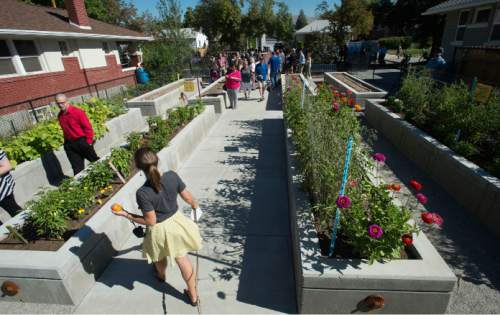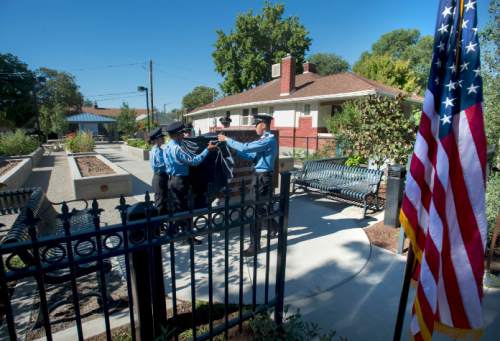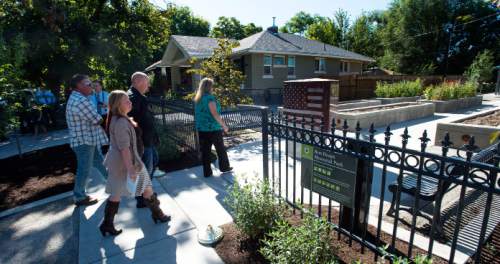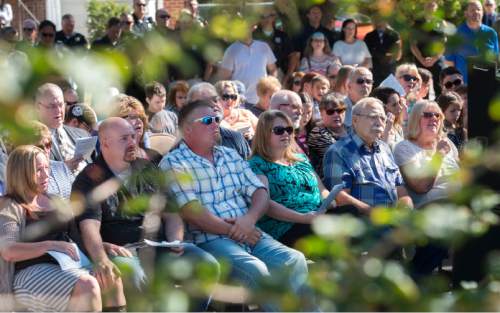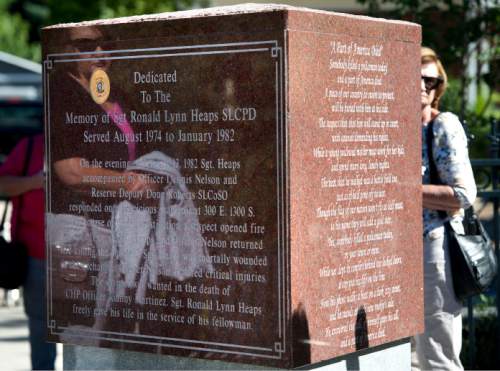This is an archived article that was published on sltrib.com in 2015, and information in the article may be outdated. It is provided only for personal research purposes and may not be reprinted.
A tear rolled down Art Healey's cheek as he remembered the man who taught him to survive on the streets of Salt Lake City.
Ron Heaps was Healey's police training officer. He spent weeks with Heaps, getting to know the family man who put on his uniform each day hoping to return home to his wife and four children. On Jan. 13, 1982, Heaps didn't.
Healey was the first officer to respond to a shootout between police officers and men inside a motor home parked in a vacant, snowy lot at 300 E. 1300 South. He doesn't remember much from that cold night. He never saw his mentor's body; he was wholly focused on performing the job Heaps had taught him.
"I've told my officers, whatever you do, go home at the end of the shift... you've got family at home to take care of, and they depend on you. But that doesn't always happen," Healey said, standing beside a stone memorial to Heaps that was unveiled Thursday morning. "And that's why we have monuments like this."
The marker stands at the front of the new Ron Heaps Memorial Park, at 256 E. Herbert Avenue (1035 South). After years of searching for a spot — the city eventually tore down a reported meth house at that location — and finding funding, city officials dedicated the park on Thursday.
It features a gazebo for community gatherings and garden beds for nearby Lincoln Elementary School students to grow flowers and vegetables.
The park sits just a few blocks from where Heaps died in a shootout with a fugitive who was already wanted for killing a California Highway Patrol trooper.
On Oct. 2, 1981, CHP Trooper Johnny R. Martinez and his partner were called to clear some lumber that had fallen onto the San Bernardino Freeway in east L.A. But as Martinez's partner pulled onto the freeway to block traffic, fleeing robbers pulled up alongside him and — thinking they had been identified in connection with the robbery — shot and wounded the trooper in the neck, shoulder and back, Healey said. They then fatally shot Martinez at point-blank range.
"One of the suspects [Eugene Gonzales] fled California and came to Utah," and was living in a motor home at 300 East, Healey said. On Jan. 13, someone called about a suspicious person.
At the time, Heaps already knew he was living on borrowed time. In the late 1970s, Heaps stopped a driver for a traffic violation on 300 West and — counter to his own penchant for safety — returned to his patrol with his back turned.
"The guy got out of the car and shot him in the back with a loaded automatic — except, he forgot to rack one into the chamber, so all he got was a click," Healey said. "Ron turned around, had the drop on him and took him into custody. Ron said, 'From that day on, I know I'm living on borrowed time.' "
The January night when that time ran out, another officer was supposed to respond to the suspicious person call. But then-Cpl. Heaps and his partner Officer Dennis Nelson went in their place, along with Reserve Deputy Doug Roberts. At 9:25 p.m., they approached the motor home, unaware that Gonzales was wanted for the murder of the California trooper.
"Ron asked him if he had any identification. At that time, the suspect produced a gun and, point-blank, shot my friend," Healey said. Heaps was hit between the panels of his body armor and died within minutes.
Nelson also took a bullet and was knocked backwards, but returned fire and killed Gonzales. Though critically injured, Nelson lived. He sat alongside Heaps' family, fellow officers and members of the Liberty Wells community during the Thursday park dedication.
"I can hardly express the words," Nelson said, sitting on a bench in front of the memorial. Volunteering to take another policeman's call was "just the kind of officer" Heaps was, Nelson said, adding: "He was a really great person."
Heaps was posthumously promoted to sergeant and buried in the Alpine City Cemetery. He was 32.
Shane Heaps wishes he could have known his father as an adult. The eldest of Heaps' four children, Shane Heaps has good memories of his dad — as well as memories of the funeral, which swelled with police and the public alike. On Thursday, he found a familiar scene of almost 200 officers and community members gathering on Herbert Avenue.
"It stuns me that my father would garner this much following after all these years," he said.
At Heaps' funeral, a young officer — Robert Kirby, who would later become a Tribune columnist — saw Heaps' widow Anita holding their 3-year-old daughter. With a daughter of his own, Kirby recalled Thursday that he wondered what would happen if the same ever happened to him.
Heaps' death has saved other officers from such a fate. The safety lessons learned from his death resounded through the years as young officer after young officer heard the story. When Healey asked Thursday who among them learned about the shootout, many officers raised their hands.
In life, Heaps taught Healey to survive. In death, he taught countless more.
Twitter: @MikeyPanda



